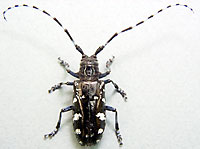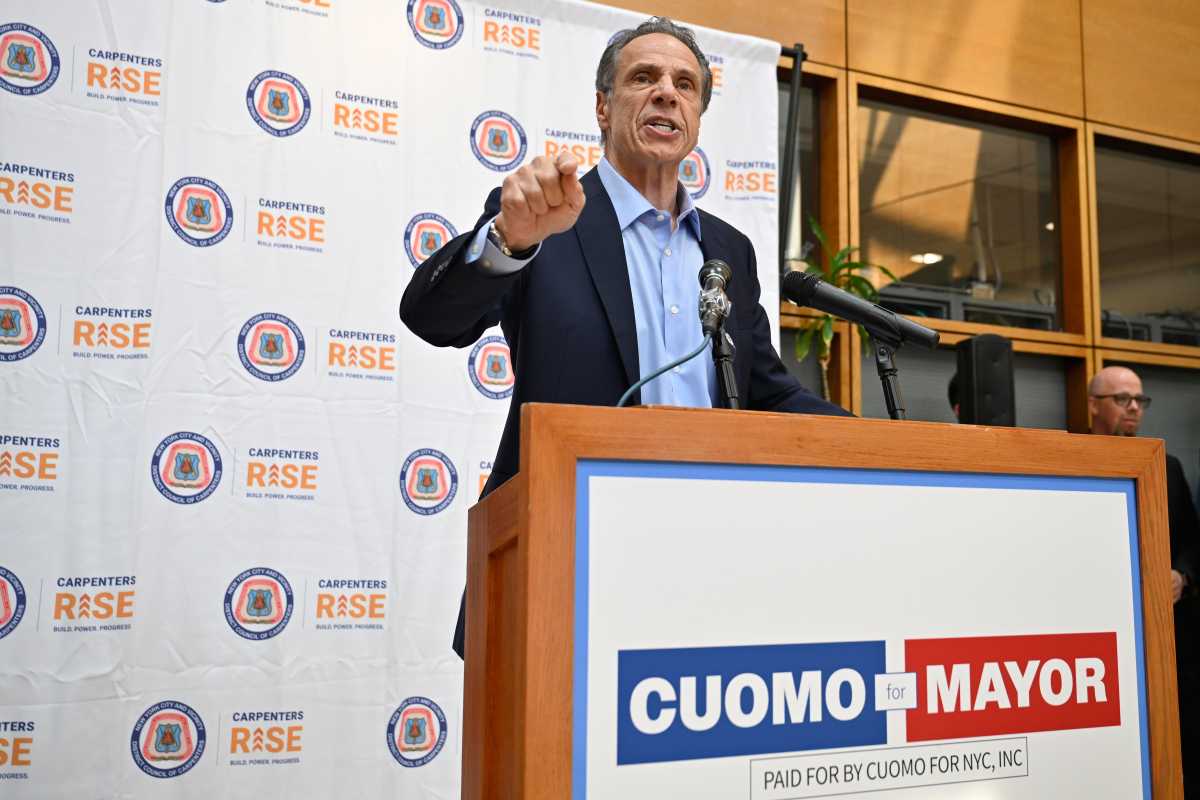He’s baaaack.
She’s baaaack. And their kids are baaack, too. Fortunately, so are
the unsung heroes of the United States Department of Agriculture —
who are back on the streets in a violent, block-by-block, house-to-house,
tree-to-tree battle against the Asian longhorned beetle.
Violent? Sure. When you’re dealing with an implacable foe who has
killed 2,200 trees since landing in Greenpoint in 1996, you can’t
be afraid to pump some defenseless street tree with eight cups of pesticide.
And you can’t be too timid to not knock on every door in Greenpoint,
Williamsburg, Bedford-Stuyvesant, East New York and Ridgewood — all
neighborhoods that have been affected by the winged, Far Eastern scourge.
The other day found Joe Gittleman, the USDA’s Asian beetle authority,
leading a team of four tree saviors on Quincy Street in Bed-Stuy.
First stop, the backyard of Dorothy Sherman, who happily allows Gittleman’s
team to inject her 50-foot silver maple, planted by her father more than
a half-century ago.
“It’s a member of the family,” says Sherman (“like
the tank,” she adds when asked how it’s spelled).
While the pesticide drains into the roots, the team inspects the tree
with binoculars. Gittleman thinks he’s spotted the perfectly round
holes that the beetles chew on their way out of an infested tree, so he
orders a team of climbers to return for a face-to-branch inspection.
Sherman again welcomes the attention. Other Brooklynites are not so inviting.
“We’d like to get all 22,000 trees in the affected area,”
Gittleman says, “but not everyone lets us into his backyard.”
Almost on cue, a woman at the next house refuses to allow the crew in,
even though the USDA has a signed release from her daughter. Gittlemen’s
team reschedules the appointment.
Seconds later, though, a homeowner from down the block strolls over and
begs the team to inspect his tree.
Gittleman and company are pleased to oblige.
“That kind of thing happens a lot,” he said later. “We
put out flyers, send out notifications, make phone calls, but people only
respond when we physically hit the block. People see us and realize it’s
not a scam. They say, ‘Is this free? Well why didn’t you call
me about my tree?’”
In most cases, the USDA did — hoping to limit the beetles’ consumption
to just a few areas and prevent a recurrence of what happened in Greenpoint,
when the under-arbored neighborhood lost 900 trees in the beetles’
first assault.
Now, with crews working six days a week, Gittleman hopes they’ll
hit all 22,000 elms, planes, maples, horsechestnuts and other toothsome
trunks favored by the Asian longhorned beetle.
“Luckily,” he said, “there are a lot of trees they don’t
eat. Yet.”

























